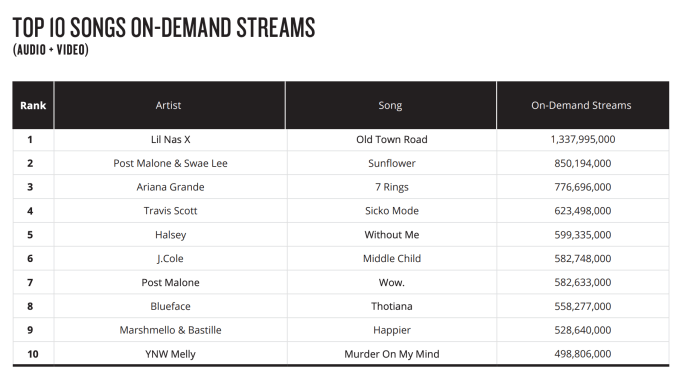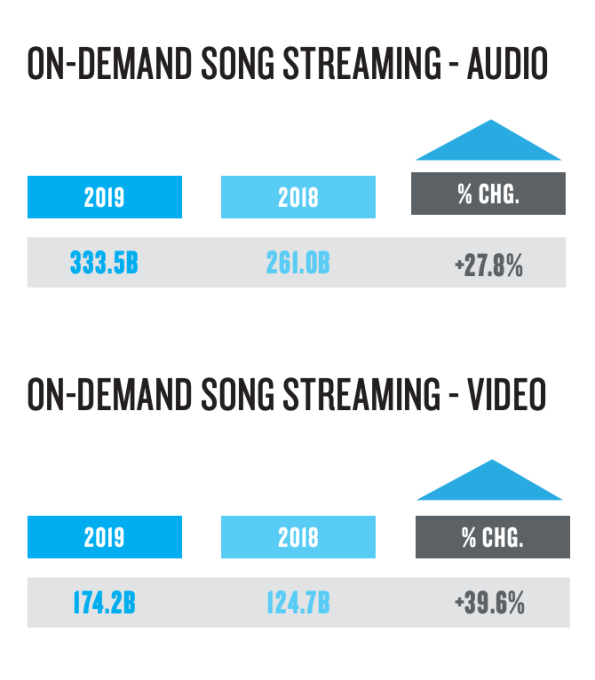Music streaming services have already delivered a new high of half a trillion (507.7 billion) on-demand streams in the first half of 2019, according to Nielsen’s mid-year Music Report released this week. This record number — an increase of 31.6% over the first half of last year — was attributed to the success of singles and albums from Ariana Grande, Billie Eilish, Halsey, Khalid, BTS, Lil Nas X, and Bad Bunny, among other factors.
For example, the report also noted the outsized impact of TikTok and its global audience of 500 million monthly users.
“No emerging app helped break more songs in 2019 than TikTok,” Nielsen said.
It then pointed to various TikTok hits like 2019’s year’s most-consumed on-demand song, Nil Nas X’s “Old Town Road,” which saw 1.3 billion total on-demand streams year-to-date; as well as Ava Max’s “Sweet But Psycho,” which snagged 310 million on-demand streams (YTD); and Joji’s “Slow Dancing in the Dark,” with its 165 million on-demand streams (YTD).

The report additionally broke down the record 507.7 billion on-demand streams into both on-demand audio streams — like those found on Spotify and Apple Music — and on-demand video streams, found it was the latter that was growing faster.
According to Nielsen data, video streaming grew 39.6% from 124.7 billion streams in the first half of 2018 to 174.2 billion streams in the first half of 2019.
Meanwhile, audio streams only grew 27.8% by comparison, going from 261.0 billion streams in the first half of last year to 333.5 billion streams in the first half of 2019.

Further analysis by Music Business Worldwide found that, despite the record streaming numbers, annual growth in audio streaming is actually declining. This year’s 27.8% growth in audio streaming from H1 2018 to H1 2019 was a reduction from the 41.5% growth seen from H1 2017 to H1 2018. Or, more simply put, the annual growth in total U.S. audio streaming was over 4 billion streams smaller between the two reports.
Also trending downward are physical album sales (-15.1% to 32.5M); digital album sales (-24.4% to 19.1M); vinyl (-9.6% to 7.7M); and digital track sales (-25.6% to 153.1M).
The report made mention, too, of a few notable moments in music so far in 2019. One key finding, in terms of its relationship to technology companies, was Marshmello’s concert held in Fortnite. Nielsen found the event led to “major gains” in artist’s catalog, with 13,000 equivalent units earned during the debut week of “Marshmello: Fornite Extended Set” — the DJ/producer’s largest sales week to date. His album “Joytime II” in the week following his appearance in Fortnite saw a 316% increase in sales, as well.
The full report, which dives into individual artists and trends, is available here.
The data was calculated from Jan. 4, 2019, through June 20, 2019.
Image credit, top: Billy Ray Cyrus and Lil Nas X perform onstage at the 2019 BET Awards on June 23, 291 in LA, CA. Photo by Kevin Winter/Getty Images
from TechCrunch https://ift.tt/2RKybMz
via IFTTT
Comments
Post a Comment